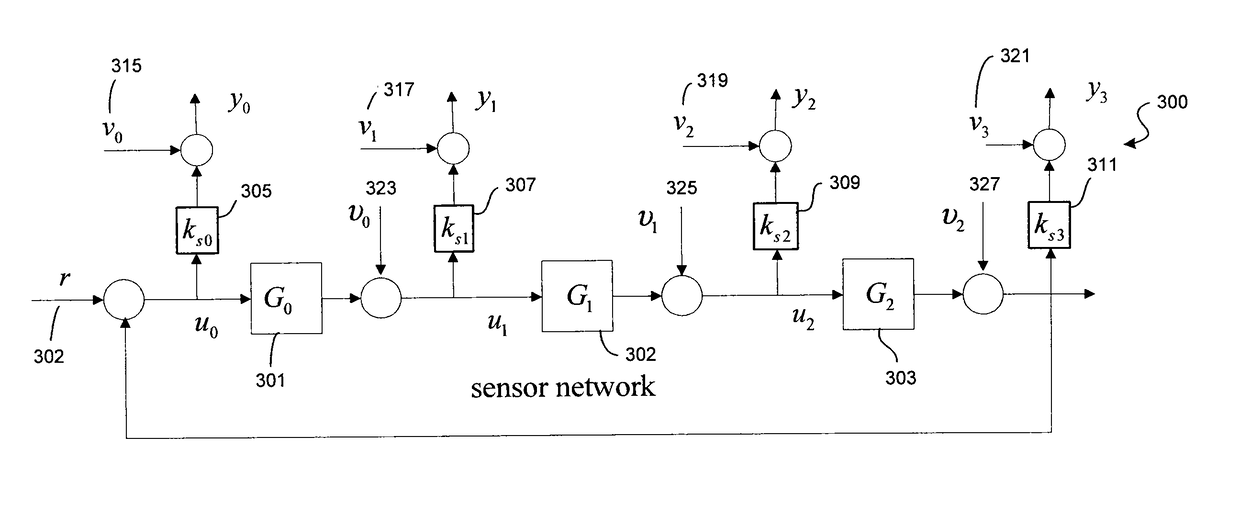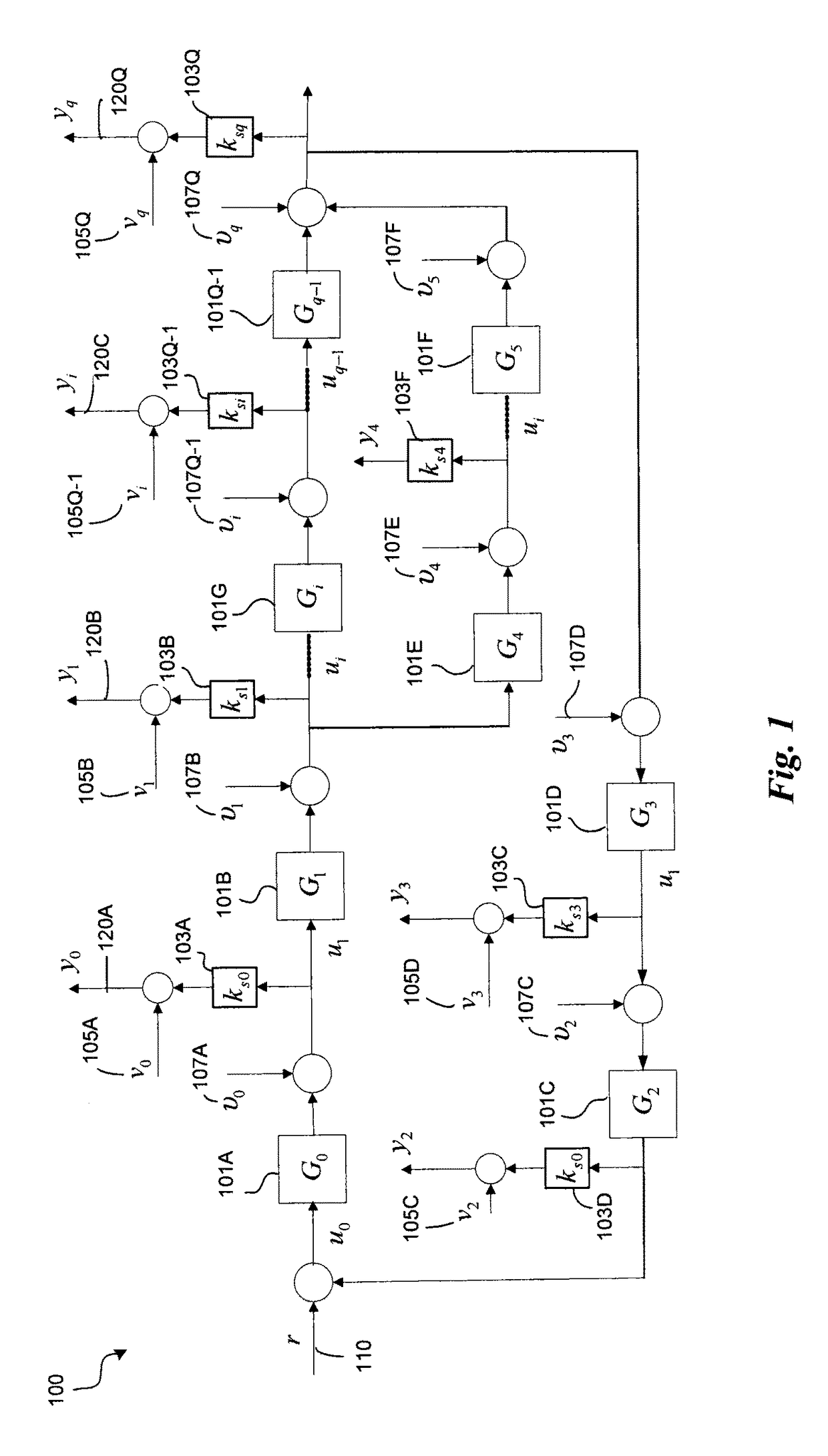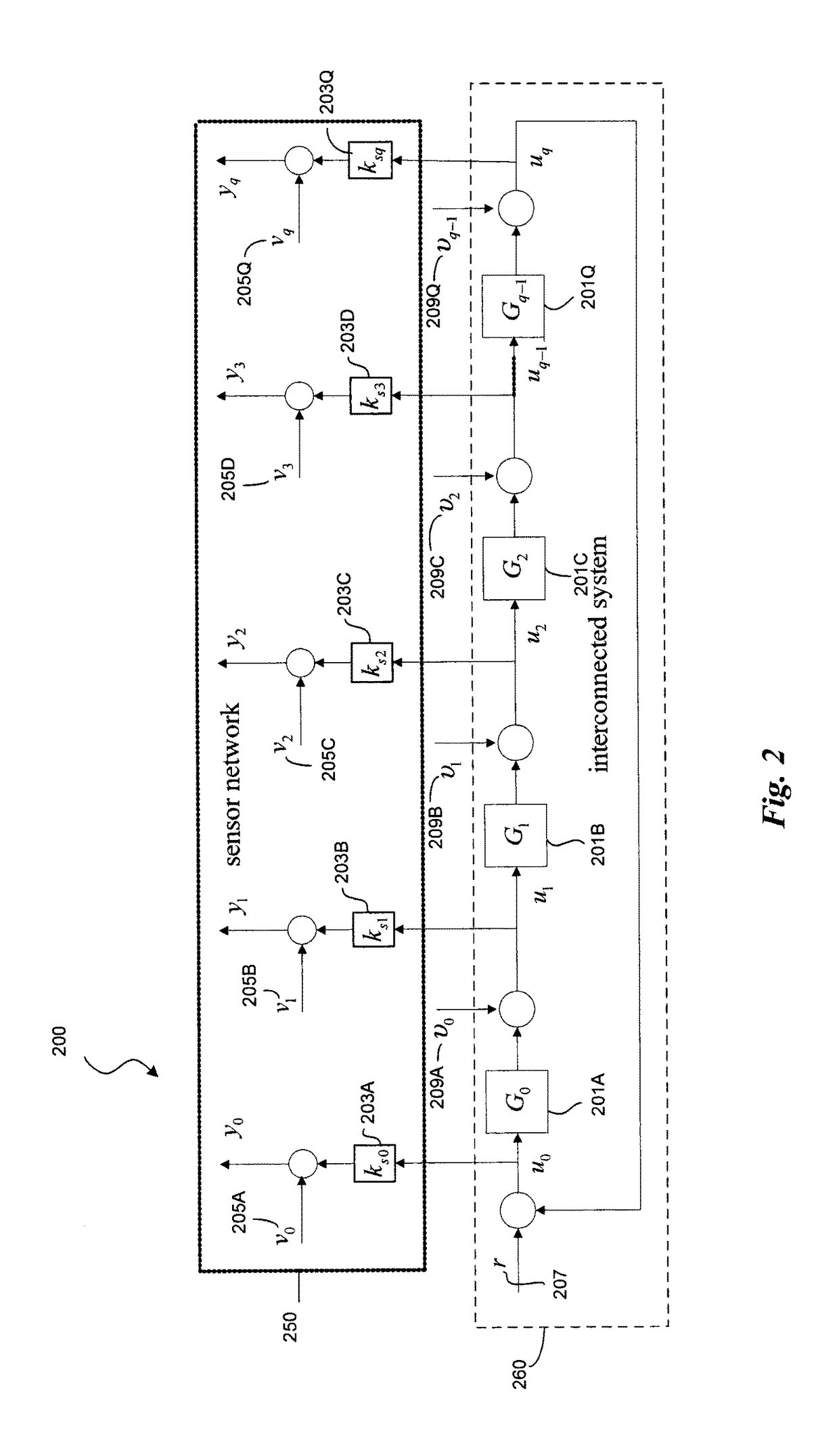Distributed filtering method for fault diagnosis in a sensor network
a sensor network and filtering technology, applied in the field of fault diagnosis mechanisms in sensor networks, can solve the problems of large distance between sensor nodes, use of such techniques, and ever increasing complexity of modern engineering systems, and achieve the effect of increasing the reliability of the fault detection mechanism
- Summary
- Abstract
- Description
- Claims
- Application Information
AI Technical Summary
Benefits of technology
Problems solved by technology
Method used
Image
Examples
Embodiment Construction
[0025]Kalman filtering (also referred to herein as linear quadratic estimation (LQE) technique), uses a series of measurements observed over time, containing noise (random variations) and other inaccuracies, and produces estimates of unknown variables that tend to be more precise than those based on a single measurement alone. More formally, a Kalman filter operates recursively on streams of noisy input data to produce a statistically-optimal estimate of the underlying system state.
[0026]FIG. 1 depicts according to one embodiment, an exemplary network (system) 100 that includes an interconnection of sub-systems and sensors. The sensor network 100 includes a cascade, parallel and feedback combinations of q sub-systems Gi, represented as 101A-101Q, whose individual inputs are represented as ui. Each subsystem may correspond to a physical entity such as a sensor, an actuator, a controller or other system component that is subject to variations, and may be affected by noise or disturban...
PUM
 Login to View More
Login to View More Abstract
Description
Claims
Application Information
 Login to View More
Login to View More - R&D
- Intellectual Property
- Life Sciences
- Materials
- Tech Scout
- Unparalleled Data Quality
- Higher Quality Content
- 60% Fewer Hallucinations
Browse by: Latest US Patents, China's latest patents, Technical Efficacy Thesaurus, Application Domain, Technology Topic, Popular Technical Reports.
© 2025 PatSnap. All rights reserved.Legal|Privacy policy|Modern Slavery Act Transparency Statement|Sitemap|About US| Contact US: help@patsnap.com



